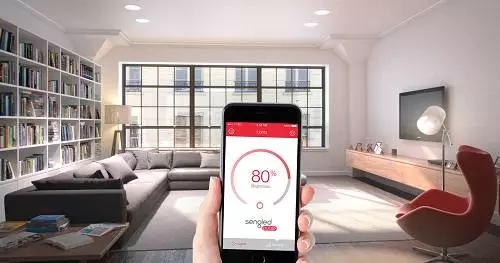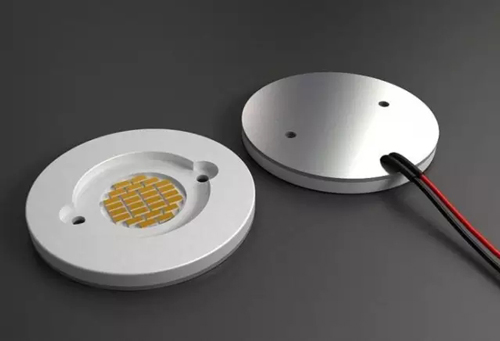In the first half of the year, the LED industry was strong in the third quarter with a “price boom†to start the second half of the market. So, what new opportunities and new trends will the LED industry present in the second half of the year?
The High-tech Research Institute LED Research Institute (GGII) believes that the global LED industry is entering the development cycle dominated by “Chinese companiesâ€. On the one hand, the pattern of China's local LED industry has basically taken shape, and the performance growth and capacity expansion of a number of leading enterprises in the middle and lower reaches have entered a new stage.
In particular, the strong power of China's capital market has pushed China's LED companies to quickly squeeze the global market share by means of mergers and acquisitions, and formed a counterbalance between traditional multinational giants.
In the second half of the year, the LED industry is still facing greater opportunities, and of course risks coexist.
On the one hand, technological innovation is still evolving rapidly, and the maturity of new technologies such as CSP is accelerating. The new application market represented by infrared, ultraviolet and headlights is starting.
On the other hand, there will be new trends in mergers and acquisitions around capital and integration.
High-tech LEDs will use three consecutive phases to showcase the top ten trends in the LED industry in the second half of the year.
Intelligent lighting layout ecological chain

Regarding the intelligentization of LED lighting, it has always been a topic of debate in the industry.
In the process of trying to open the door to the smart lighting market, Internet giants, traditional home appliance manufacturers and traditional lighting giants have adopted different ways and postures, respectively, because their respective resources and advantages are not the same.
On August 31, Huawei’s largest global ecological conference for the ICT industry in history, Huawei first fully explained Huawei’s strategic positioning. In the first speech of the conference, Huawei’s rotating CEO Hu Houkun said that Huawei’s positioning is to become an enabler and promoter of the intelligent society.
After the release of Huawei HiLink Smart Home Strategy at the end of 2015, Huawei officially announced the establishment of HiLink Smart Home Ecology for 8 months, and revealed that the first Huawei HiLink eco partners will be launched on September 30, involving air quality, lighting management and energy management. Three major categories. Among them, LED intelligent lighting is one of the key products.
Another driving force for smart lighting is that the traditional three major lighting giants Philips, Osram and GE are gradually divesting the general lighting business, focusing on the technology and ecological chain layout of smart lighting.
Guan Yong, general manager of Sunshine Lighting, said that the traditional concept of lighting control did not just need to be experienced. If it was just a switch to light energy-saving control, it could not achieve the second round of LED growth.
He said that for the old-fashioned companies such as Philips, Osram, GE Lighting, Ops and Sunshine, and the cross-border linkages between Google, Apple, Cisco, Qualcomm, Huawei, and ZTE, they are full of expectations, because this is extremely There may be opportunities for innovation.
The relevant person in charge of Lidaxin said that the strategic cooperation with Huawei mainly focused on intelligent hardware such as intelligent lighting and smart sensors relying on Huawei platform. Huawei provides advanced cloud computing solutions and core control devices for smart home systems. .
With strong platform support, Rieter can fully utilize the R&D and manufacturing capabilities of intelligent hardware and provide a wide range of high-quality products to help Huawei build a more complete smart home ecosystem.
In the past few years, LED smart lighting has shouted a lot, but it has not formed a real and sustainable market demand growth. According to related sources of Rieter, “With the continuous marketing, many large customers are now importing smart lighting products.â€
Flip/CSP, application segmentation determines the future
Because flip-chip heat dissipation, high reliability, and high current drive, making it a very cost-effective, "flip-chip + chip-scale package" has become the perfect combination.
It has a strong advantage in the cost and reliability of LED white light devices, and has become the mainstream of LED industry development in the past two years.
However, limited by the upstream chip manufacturers' main capacity in the positive loading of chips, the cost of flip-chip and CSP decline, in addition to the market demand, a large part of the factor is the upstream capacity supply.
In addition, how to locate your own market segment is also a flip-flop / CSP vendor needs to think calmly.
"CSP is currently widely used in the field of backlight applications, but there is still no price/performance ratio in the lighting industry." Xiao Guowei, the chairman of Jingke Electronics, who was first involved in flip-chip technology in China, believes that the price of SMD two years ago, CSP There may be an advantage to replace the general lighting market, but at such a low price, it has not seen much significance.
The application advantages of specific subdivisions such as high-power integration and backlighting will be the future of flip-chip/CSP.
Whether it is flip-chip or CSP, it is not to replace the existing LED package. Due to the diverging trend of the LED industry and technology, the majority of Evergrande manufacturers exist, and small manufacturers need to find their own market.
CSP products in the backlight, special lighting and automotive lighting market, customers have a higher design flexibility. Special commercial lighting, patio lights, projection lights, flashlights, mobile flashlights and other projection products require optical design, CSP has its own unique advantages.
Flip-chip LEDs have higher reliability than formal and vertical structures, especially high resistance to high current surges. This performance is beneficial to improve the service life and high power density of LEDs in practical applications.
The High-tech Research Institute LED Research Institute (GGII) predicts that the market share of CSP and flip-chip products will reach more than 30% in the next three years, and it will also become the best opportunity for Chinese LED packaging companies to fully surpass foreign companies.
Light engine market demand broke out

As early as 2008, some light engine module products appeared in the LED market. By 2011, the light engine once attracted a lot of attention in the industry. At that time, the international organization Zhaga was also pushing the light engine module standard. Unification.
In recent years, the actual market demand for light engines has not exploded. But the idea that the light engine module will become a mainstream technology and product in the future has not been questioned.
With the further increase in labor costs, the demand for directly assembleable modules by domestic small and medium-sized lighting companies is gradually increasing. In the eyes of the industry, the high-index AC-LED light engine module is bound to occupy the market first.
At the same time, AC LED replaces the smart applications in the high-end market, such as using infrared to control LED brightness, using Bluetooth, WIFI to adjust LED color and brightness, and automatically sensing brightness changes and other aspects will gradually enter the LED lighting market.
Wang Mengyuan, general manager of Zhonghao Optoelectronics, believes that the market size of the light engine is still very small. This year, there will be about 7-8 billion yuan, and it is expected to reach 2.5 billion next year.
An important factor driving the explosion of light engine demand is the trend of miniaturization of LED lighting fixtures in the future.
1. The structure space is limited (the power supply is large and needs to occupy a large space and cannot be installed in a compact luminaire);
2, spotlights, decorative lights and multi-headlights (such indoor lamps are more exquisite and beautiful, small in size, no more space to install the power supply, but also have cost requirements);
3, outdoor floodlights (small size, portability trend).
The compact size, modularity and intelligence of the light engine can enhance the overall design space of LED lamps.
North American market will become the main battlefield for export

At present, China's LED industry has basically determined the market structure, the emergence of the upstream and downstream giants; the establishment of international competitive advantages in the low-end market, the global packaging and lighting production base is stable.
Compared with Europe, Africa, Southeast Asia and other markets, the North American market “seems to be open, but it is closed.†There is a very sound trading system and judicial system. There are many barriers to entry, and there are not many LED companies that actually enter the North American market.
The US Department of Energy recently released the latest version of the solid-state lighting energy-saving biennial version of the forecast, focusing on the US general lighting market. The data shows that in the North American market, LED lights and luminaires are expected to account for 86% of fixture installations in 2035, covering all lighting categories, compared to 6% in 2015.
In the market segment, UL recently updated the LED lamp technology resolution for direct replacement of fluorescent tubes, and plans to officially include UL1993 (self-ballasted lamps and their adapters) standards by the end of this year. The resolution helped more LED manufacturers quickly enter TypeALED tubes into the North American market.
Nie Pengxiang, chairman of the survey and test, believes that for the US lighting market, we have the feeling of sitting back in the past. In terms of LED applications, the number of LED lights in China has been far ahead of the United States, and the chaos has begun to appear in the entire market.
However, to enter the US market, the access system is very strict.
"LED companies want to enter the US market, and can succeed in the US market, the most important thing is to do product quality and reliability. Then, product certification is the primary threshold." Nie Pengxiang said.
In the past two years, the demand for LED lighting products in the US market has continued to grow at a high speed.
On the one hand, due to the high level of consumption in the US market, the price sensitivity of LED lighting products is low. On the other hand, in recent years, the cost performance of LED lighting products has continued to increase, and its energy-saving economic benefits have become more and more obvious, and market acceptance has increased rapidly.
Although the market space is large, but want to share a flaw, Chinese companies still need to make a "knot" in product quality.

The smart version is a teaching device specially designed for educational activities. Smart board has all the functions required for the teaching activity scene, such as whiteboard writing, screen sharing, annotation, video playback, teaching tools, VR laboratory demonstrations, etc.
smart board for school,smart whiteboard,smart version,smart board interactive,smart board for home,smart board app,smart board software
Jumei Video(Shenzhen)Co.,Ltd , https://www.jmsxdisplay.com
